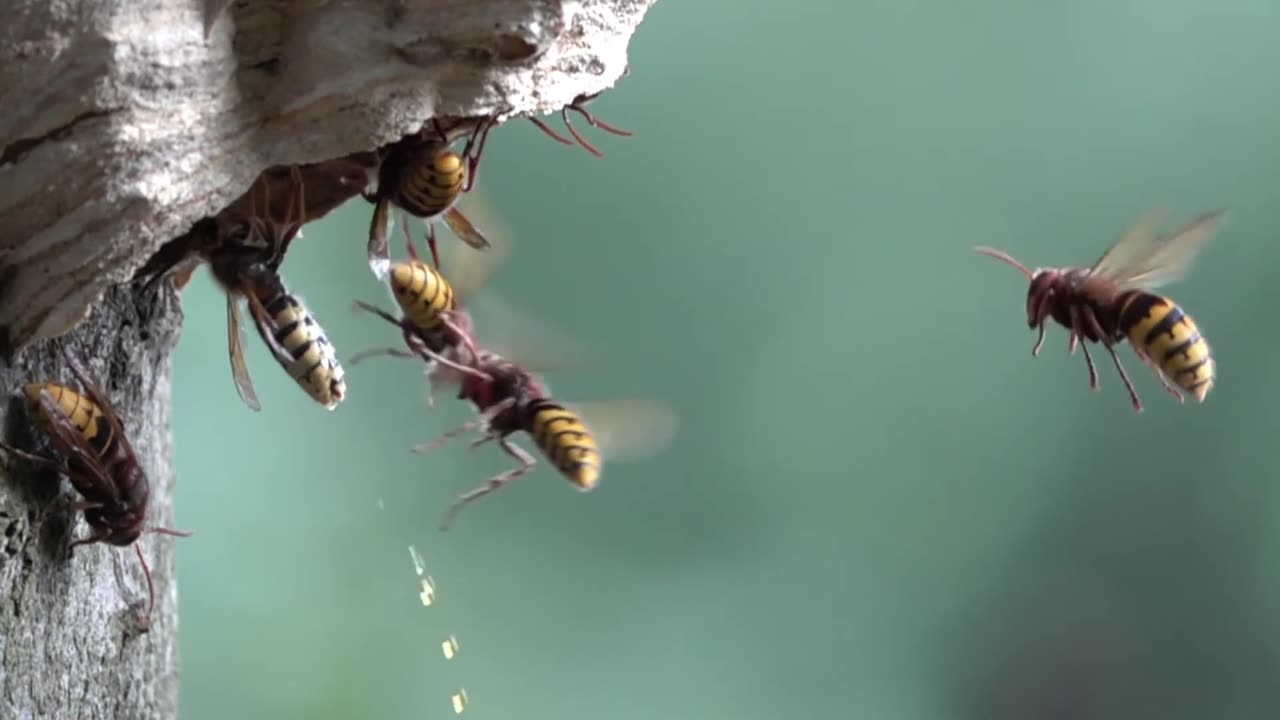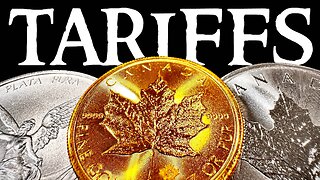Premium Only Content

Hornet Disposes Of Body's Liquid Waste
Occurred on September 9, 2017 / Dohr, Germany
Info from Licensor: "Hornets urinate
I am Lothar Lenz, a nature photographer with heart and soul, and I am lucky enough to live in a small cul-de-sac village in the Eifel - surrounded by fields, forests and stream valleys, just a stone's throw from the Moselle valley. Here I can experience nature in all its diversity and observe some of the most fascinating animals right on my doorstep: Black storks, wildcats and eagle owls are my permanent neighbors. In summer, my garden is full of hornets and wasps, which I capture with my camera, whether in impressive close-ups or exciting video sequences. This closeness to nature inspires me every day and drives me to capture the beauty and uniqueness of our environment in my photographs. My desire is to inspire and motivate others to get involved in protecting this wonderful world - be it in distant regions or right on their own doorstep.
Last summer I again spent many hours observing, photographing and filming social wasps in my garden in Dohr (in the Eifel) in Rhineland-Palatinate, Germany. I spent hundreds of hours observing and arranging the animals until they got used to me (and I to them), and then I managed to take some extraordinary pictures.
Observing nature and especially animals is my passion. There are always new things to discover. Sometimes these observations are amusing, sometimes tragic, but always interesting.
Hornets (Vespa crabro) do not have a specific behavior that could be described as 'urinating' in the human sense, but they dispose of excess liquid in a remarkable way. At the nest entrance, workers can sometimes be seen releasing small droplets of a clear liquid. This fluid consists mainly of water with dissolved metabolic waste products, which are filtered out of the body by the Malpighian vessels - the functional equivalent of the kidneys in insects.
This behavior occurs especially in warm weather or high humidity. The liquid released evaporates quickly and helps to regulate the microclimate within the nest. At the same time, hornets prevent excessive accumulation of moisture, which could soften the nest material or promote mold growth. It can sometimes be observed that workers actively control the discharge of liquid by slightly lifting the ends of their abdomen and deliberately releasing drops."
-
 1:20:47
1:20:47
Redacted News
2 hours agoMexico CAVES to Trump over tariffs, USAID Shutdown, & Zelensky loses $200 billion | Redacted Live
77.1K164 -
 LIVE
LIVE
Revenge of the Cis
3 hours agoEpisode 1439: Holy Guacamole
2,444 watching -
 1:01:50
1:01:50
In The Litter Box w/ Jewels & Catturd
1 day ago1 TRILLION! | In the Litter Box w/ Jewels & Catturd – Ep. 733 – 2/3/2025
51.3K27 -
 1:38:44
1:38:44
The Quartering
4 hours agoTrump's Tariffs Already Work, Blackhawk Pilot Coverup, DNC Makes Insane David Hogg Appointment
81.1K71 -
 LIVE
LIVE
Dr Disrespect
6 hours ago🔴LIVE - DR DISRESPECT - TARKOV - ZERO TO HERO RAIDS ONLY
3,465 watching -
 1:13:51
1:13:51
Candace Show Podcast
4 hours agoEXCLUSIVE! Did Ryan Reynolds Extort Hollywood Execs? | Candace Ep 143
112K108 -
 2:01:42
2:01:42
Darkhorse Podcast
5 hours agoA Germ of Truth: The 263rd Evolutionary Lens with Bret Weinstein and Heather Heying
33.4K10 -
 9:37
9:37
Silver Dragons
4 hours agoGoodbye Cheap Silver - How the Tariffs Will Change Stacking Forever
20K -
 37:33
37:33
CryptoWendyO
4 hours ago $2.68 earnedWORST DAY IN CRYPTO HISTORY $10 Billion in Liquidations!
32.9K7 -
 57:01
57:01
PMG
4 hours ago $2.15 earnedHannah Faulkner and Dr. Bryan Ardis | Don't Fall For the Bird Flu!!!
23.5K